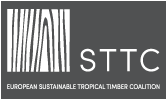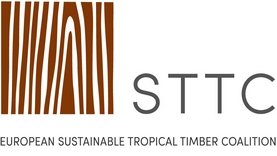Certified forest management at route to meeting Fair&Precious commitments

Photo: Nicolas Rénac
Partners in the Fair&Precious (F&P) sustainable tropical timber promotion campaign made 10 key commitments to operate sustainably, ethically and legally. Now F&P founder ATIBT has commissioned a report further explaining those commitments and demonstrating how they are met through supporting certified Sustainable Forest Management (SFM).
Initially, Probos’ forest and timber sustainability analysts and advisors from Wageningen, the Netherlands, undertook a literature review to elaborate on the commitments and their value. Subsequently Simon Lhoest of Gembloux Agro-Bio Tech at the Université de Liège was commissioned taking into account latest scientific research and data to show the linkages between the F&P pledges and SFM. The resulting report, The 10 commitments of Fair&Precious: the Scientific Arguments, will soon to be posted on ATIBT’s website.
The first F&P commitment made by partners is to support management and protection of tropical forests to help combat climate change. Mr. Lhoest’s report cites evidence showing that SFM helps maintain the forest’s carbon stock, with selective felling and reduced impact logging resulting in the retention of 76% to 92% of the original volume. It then returns to 100% after the harvest cycle, often quite rapidly. Research in the Amazon, showed carbon stocks of a sustainably managed area actually above original levels 16 years after harvest.
F&P supporters also pledge to keep timber harvest levels below forest growth rates. SFM, says the report, adapts felling to specific forest environments, where necessary diversifying target species to ensure regrowth of the timber stock.
Selective felling can also accelerate regeneration, with research showing higher rates of new growth in FSC-certified sustainably harvested areas than in mature, non-exploited forest. F&P partners also undertake to increase knowledge of biodiversity to conserve species. Mr. Lhoest quotes research showing abundance of species is significantly greater in selectively harvested areas than in forest otherwise disturbed by human activity. In fact, he states, research has shown that selective logging ‘energizes the forest ecosystem’. “It creates gaps, such as those that occur in forests naturally, which constitute micro-habitats necessary for development a multitude of tropical species,” he says. By conserving tree cover over large areas, it also allows connectivity between and dispersion of flora and fauna populations
Prevention of poaching is another F&P commitment. Companies implementing FSC and PAFC/PEFC-certified SFM must implement a globally-defined policy of wildlife management. That includes training and awareness raising programmes on the importance of wildlife protection for employees and local communities and anti-poaching strategies. Provision of alternative protein sources to reduce bush meat consumption can also be involved.
F&P commitments address too the social and economic well-being of forest operation employees and local communities. The report cites research showing that, due to the social and ethical obligations imposed on companies by SFM certification, their workforces and their families enjoy better living conditions. They have access to better healthcare, housing and education, while local services and wider infrastructure are improved.
The report also looks at the connection between certified SFM and the other F&P commitments, including the pledges to support value-added timber production local to forest operations, train local people and use of a wider range of tropical timber species to make best environmental and economic use of the forest resource.
“Each of the 10 Fair&Precious commitments is put into perspective, with an explanation of how SFM contributes to them based on latest scientific research,” said ATIBT General Manager Benoît Jobbé-Duval.












